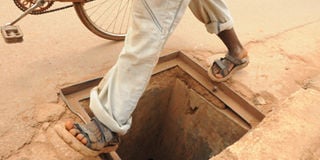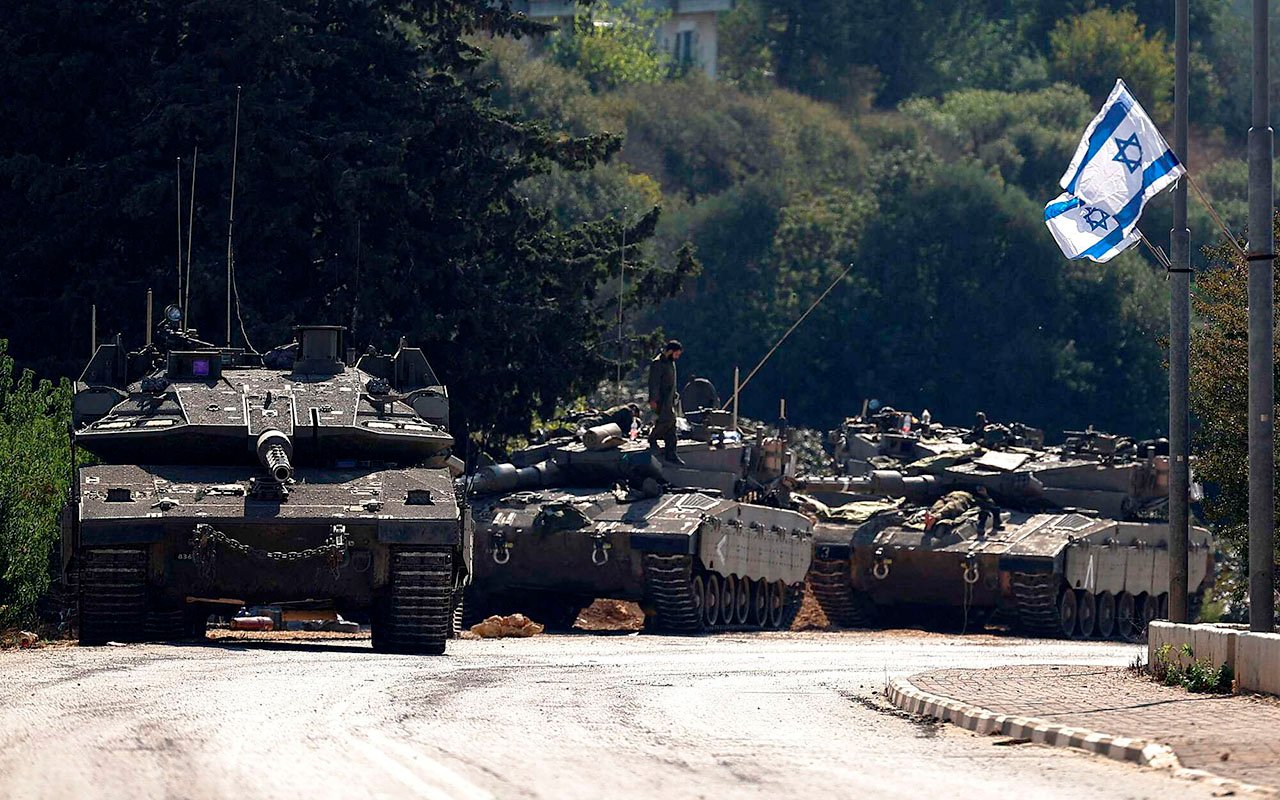Prime
Deathtraps that open manholes are

A man walks over a manhole in one of the roads in the city. Many of these are uncovered and are potential sites of death. Photo | File
What you need to know:
One minute, it is a gaping manhole everyone can see. After a downpour, few are able to tell it exists because it is covered by water. And then someone walks into it and drowns.
Brenda Omuntu, an employee of Barclays Bank, boarded a boda boda motorcycle from Katwe Town shortly after a heavy downpour at 1pm on Wednesday. She wanted to get to the city centre before the rainwater cut off the Clock Tower junction.
She never reached her intended destination nor did the boda boda rider. They both plunged into an unfenced drainage channel, as the rider tried to find a shallow area to pass, and drowned.
This tragic death isn’t the first of its nature.
In July, 2005, at the entrance of Kikuubo Lane, a renowned business hub in the middle of the city centre, one Robert Kizito, a boda boda cyclist, fell into an uncovered manhole before he was carried away by rain water. The prolonged search for the body along Nakivubo Channel and Lake Victoria yielded nothing, sparking a steamy debate in Parliament on the state of city infrastructure.
Five years later, it is the same story, same promises and same cautionary measure being given. But the numbers of people dying in open manholes (that are supposed to be covered) and unfenced deep water drainages are not decreasing. Kawempe is the most affected division in the capital city. Zones of Bokasa, St. Francis, Mayinja and Kibe have become like seasonal rivers.
Worse still, the area has drainage channels, like Nsooba and Lubigi, as deep as three metres, that overflow during the rainy season. Last month, a 16-year-old girl and three other people drowned in unrelated incidents in the same area.
Areas such as Namasuba, Ndejje and Lufuka, which are found on the outskirts of Makindye Division, have also become death traps whenever it rains. The area was mostly a wetland but when people started constructing there, they built small drainages. However, the construction was not well coordinated. This causes the water to flow in a zig zag motion and not straight, causing some blockage. When it floods therefore, the drainages are covered and become dangerous. In the Central Division, most manhole covers and fences have been stolen by scrap dealers.
The Chief Fire Officer, Mr Simon Musoke said the increase in deaths and injuries of city dwellers in such incidents has a direct bearing with the increase in rains.
Mr Musoke said they have responded to 23 cases of people drowning in places like drainages, from January, 1 to June 30 this year.
“This doesn’t include the cases in July, August and September when there has been a heavy downpour,” Mr Musoke said yesterday.
This means if the rains continue this year, deaths by drowning may go beyond the 41 registered last year (these cases of drowning exclude those reported on major lakes and rivers). Mr Ssebuliba Mutumba, Kawempe South Member of Parliament, says the situation is very bad in his area and people are drowning in unfenced drainages. But because they are poor, he says, “those deaths are considered by government as unessential statistics.”
“It is disaster now. I have talked to the Minister of Disaster, Mr Musa Ecweru and we are going to the area next week. Many people have abandoned the areas because of the increase in cases of drowning,” he said.
Kampala Capital City Authority (KCCA) which is responsible for the fencing and making sure that manholes aren’t in dangerous conditions, says that meagre resources can’t allow them to execute their duties.
KCCA spokesperson, Mr Simon Muhumuza, said there is a plan to fence off all the drainages and also cover the manholes, but they have no resources to implement the plan.
Also, many drainages have a lot of silt as well as plastic from garbage thrown there. This causes a blockage when the area floods. “They are very many things to work on yet we have no resources. Now, it is raining but you can see how we are struggling to de-silt the drainages,” Mr Muhumuza said. Kawempe Division residents attribute the origin of the problem to the Northern Bypass, which they say acts as a dyke. They say rainwater from Makerere and Kiwunya can’t cross to Lubigi wetland. Thus it floods in Kawaala and Kazo areas. When the area floods, even the small ditches in the house backyards become death traps.
However, Mr Musoke says many of the deaths and injuries can be avoided if people take preventive measures.
“People shouldn’t walk or ride in rainwater because you may not know the strength, depth and speed of water. If a person is caught up by floods, he should also not leave a safe area unless he or she is accompanied by a person who knows the geography of the area,” Mr Musoke said.
Police statistics show that most people who drown are children and most of them drown either when they were walking back home after the downpour or playing near drainages.
[email protected]




